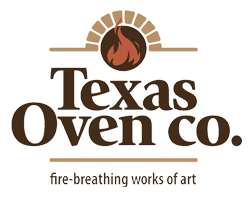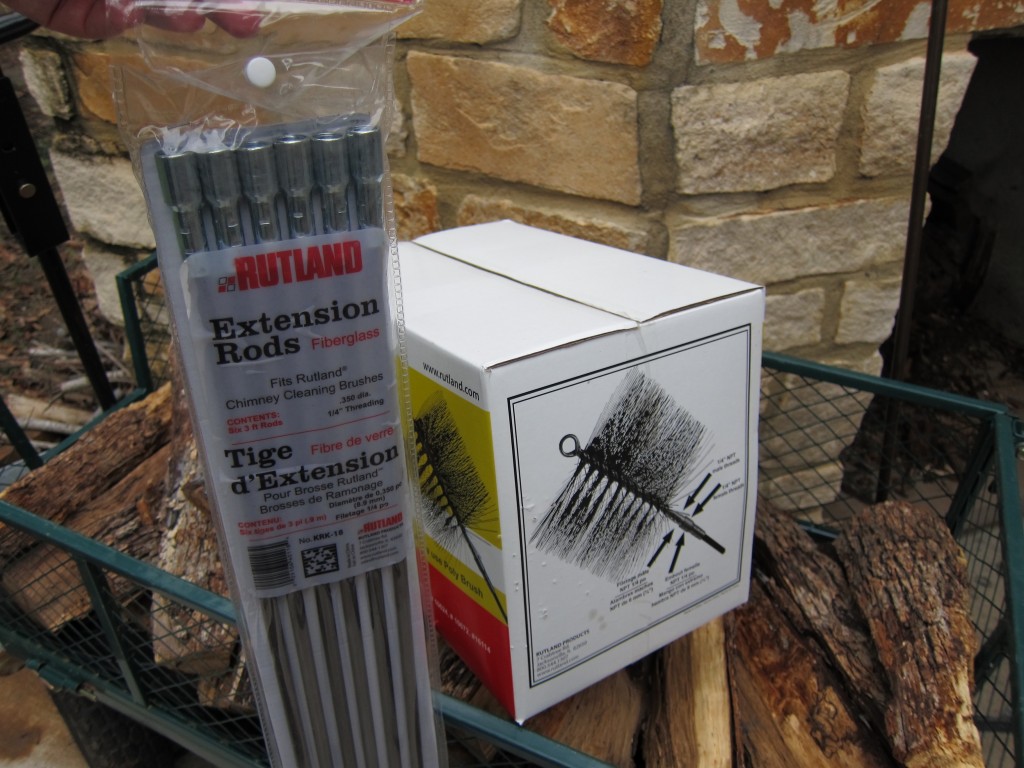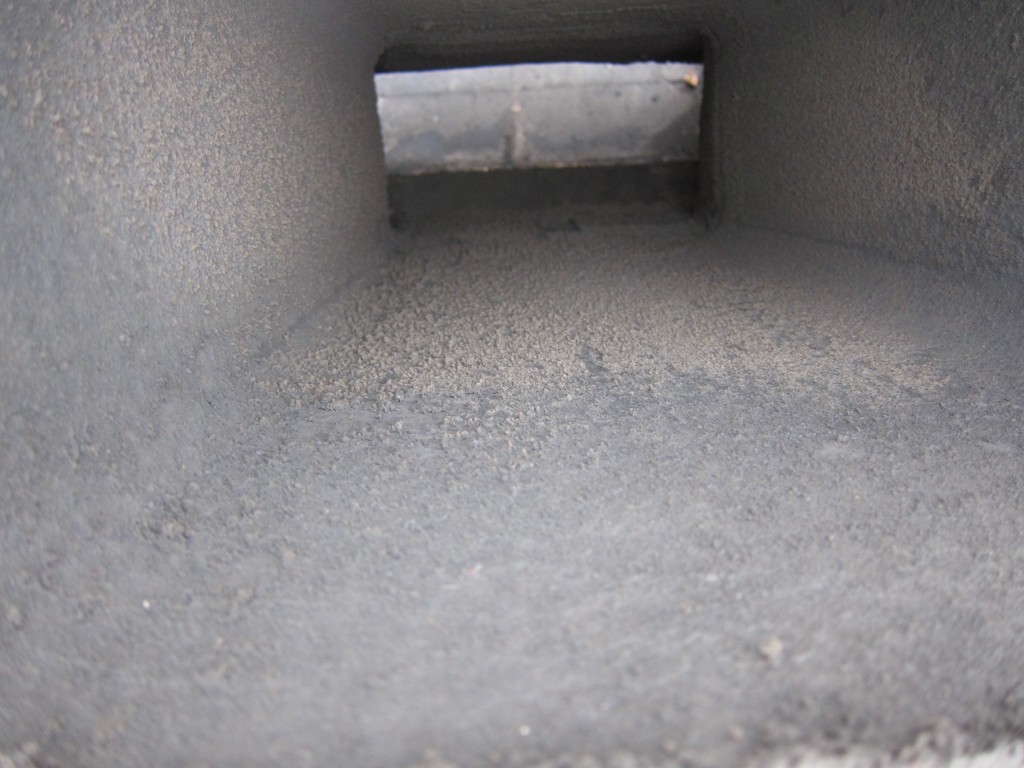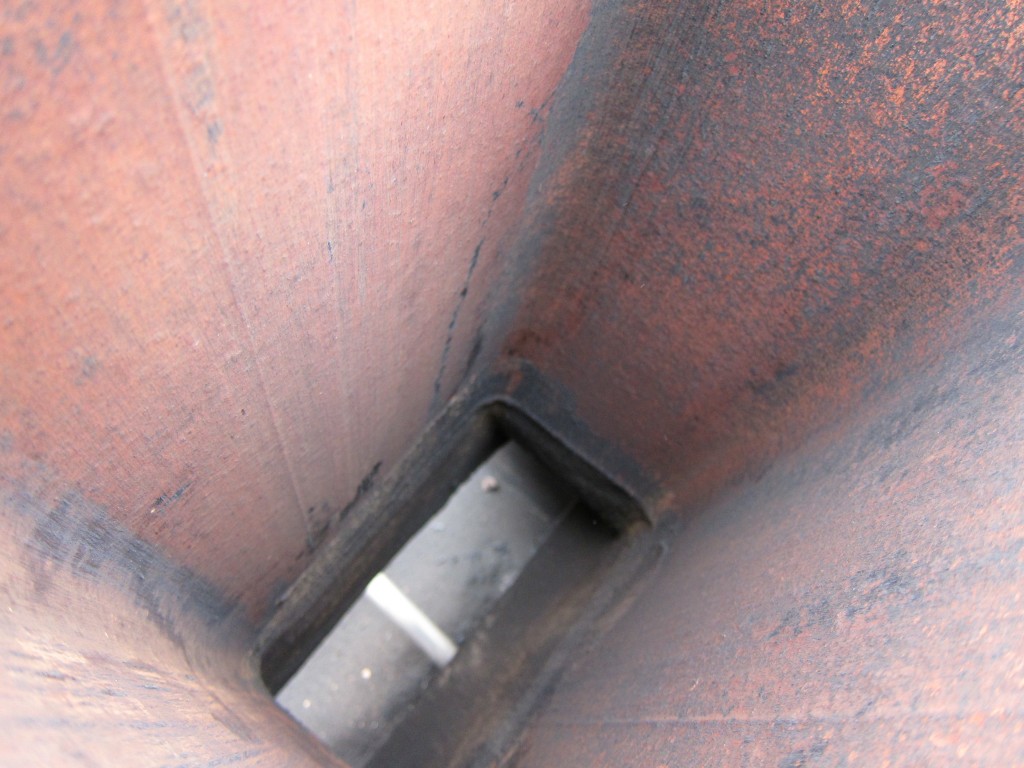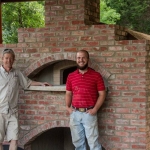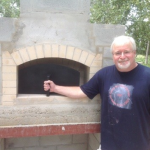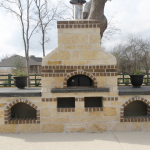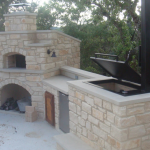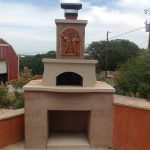Chimney Brush for Wood-burning Oven
Chimney brush basics
“I choose me bristles with pride, yes I do. A broom for the shaft and a brush for the flue.”
We recommend either buying a chimney brush for a wood-burning oven or investing in a regular flue cleaning service. You can buy a chimney brush to fit all of the standard wood-burning oven flue sizes (6″, 8″, or 10″ diameter, and 9″x13″). Brush heads and rods are sold separately. This 8″x12″ chimney brush by Rutland retails for $23.99 on Amazon with the fiberglass chimney brush rod kit sold separately for $53.29.
Why use a chimney brush
A suitable chimney brush to removes soot from the chimney and minimizes the possibility of a chimney fire. Removing soot from the chimney prevents the buildup of combustible creosote. Periodically giving the interior chimney a good brushing is part of proper oven maintenance. Adding a chimney brush to your oven tools and periodically sweeping out the soot is a smart safety measure.
What is creosote?
Creosote is an oil-based residue that results from burning wood. Smoke carries volatile oils and particulate up the flue and out the chimney. Some amount of residue in the smoke condenses inside the chimney as creosote.
Chimney brush test drive
For our free-standing oven, we needed only one extension rod. Remove the spark arrester and clean it with a wire brush.
Be aware that soot collects in the chimney. Regular removal of soot prevents a serious build up of volatile, hardened creosote. (For more information, see What Causes Creosote.)
This oven flue had moderate stage one creosote buildup and some stage two. We removed it quickly with the Rutland chimney brush on a single extension rod.
Stages of accumulation
Professional chimney sweeps say there are three stages of creosote accumulation in a chimney. Stage one is dusty soot that can easily be removed with a brush. Stage two is a crunchy, flake-like deposit that is “fairly removable,” and stage three is glassy substance that is hard to remove. (See the article About Creosote in Chimneys.)
What causes chimney fires?
In addition to creosote accumulation, the burning of wet/ poor quality wood is linked to chimney fires. Unseasoned and/or poor quality wood burns inefficiently sending more oils and particulate up in smoke. Wet wood cools down the flue and chimney, creating an environment for more condensation of smokey residue. (See our blogs on the importance of burning seasoned wood and tips on how to season wood.)
Professional chimney sweeps say that chimney fires are more common when ovens are improperly vented or have an uninsulated chimney. Chimney fires are not a problem if you have a well-built oven with proper venting, if you burn good quality wood, and if you keep the chimney (and in a commercial kitchen, any exhaust fans) clear of soot.
Steps for a clean chimney
- Burn seasoned, hardwood.
- Burn hot fires to fully combust the wood.
- Periodically use a chimney brush to remove soot, or have it done.
- Clean the spark arrestor and exhaust fan (commercial ovens).
We’re happy to clean out your oven’s flue as part of our annual (residential) or quarterly or semi-annual (commercial) maintenance. This service also includes mending small cracks, checking the flue and chimney for soot, and re-curing occasional-use ovens.
As Dave says, “with regular maintenance, your oven will last longer than you will.”
